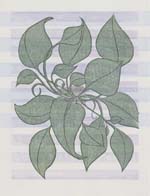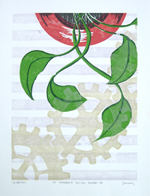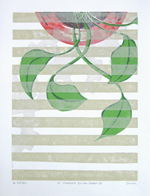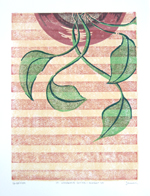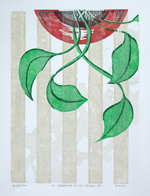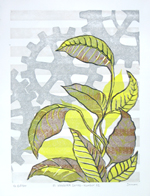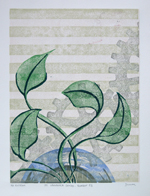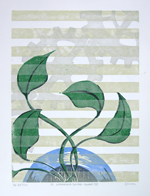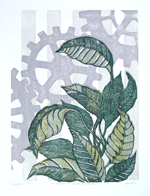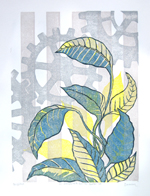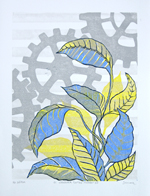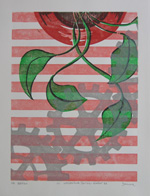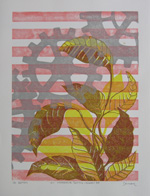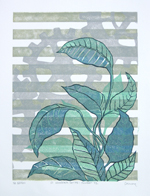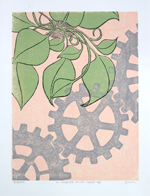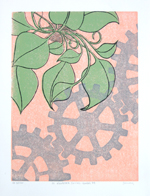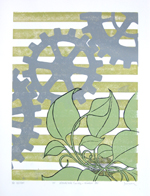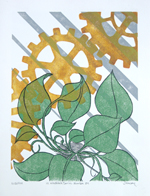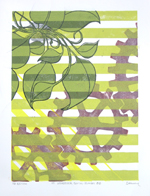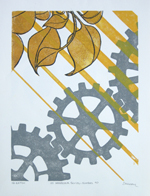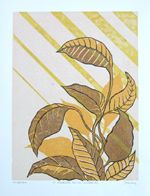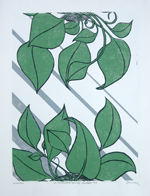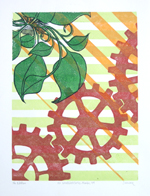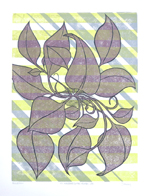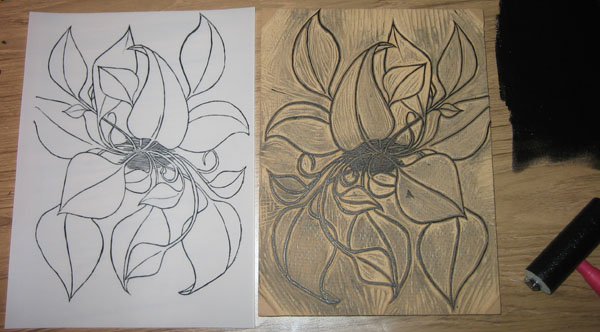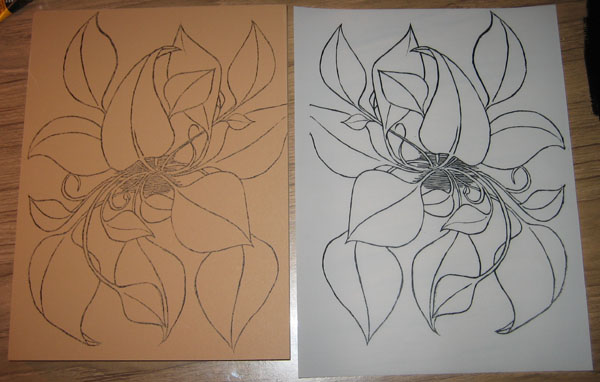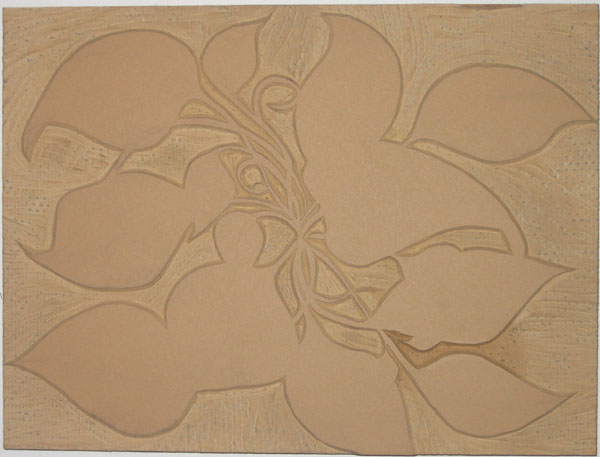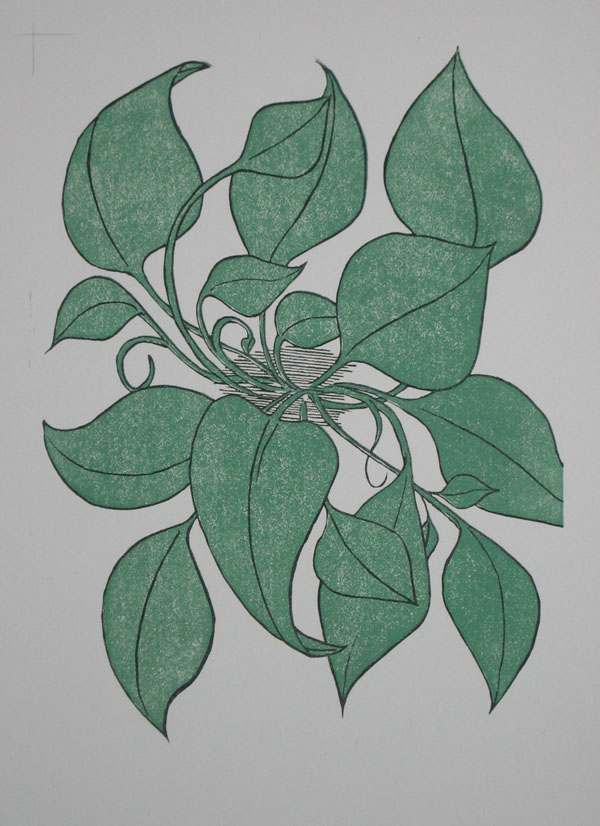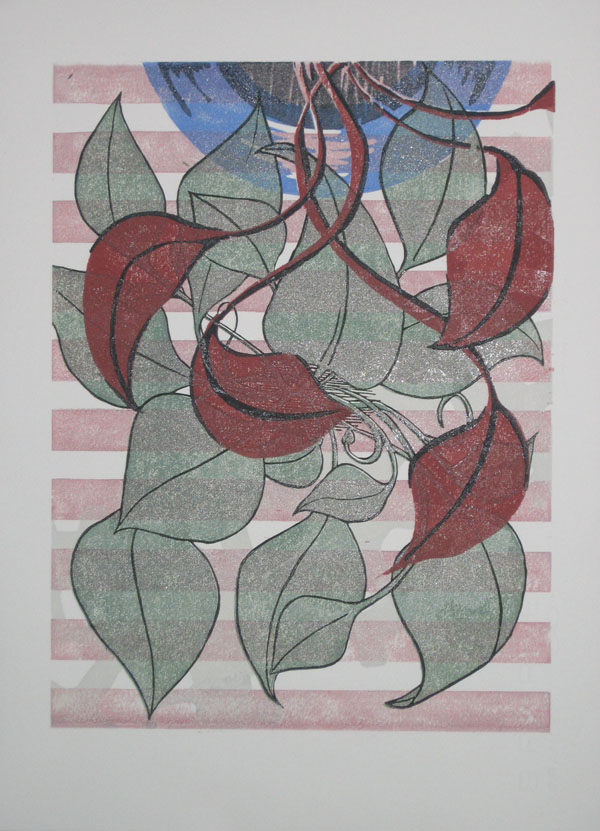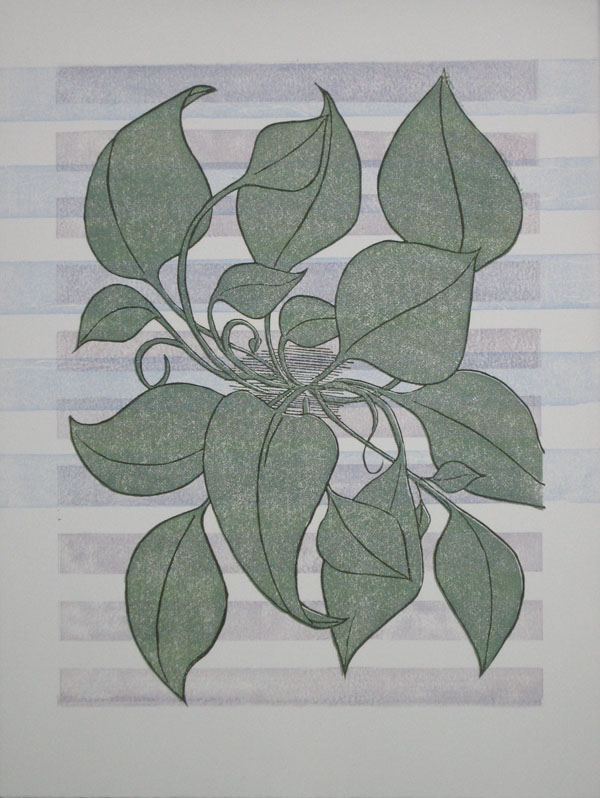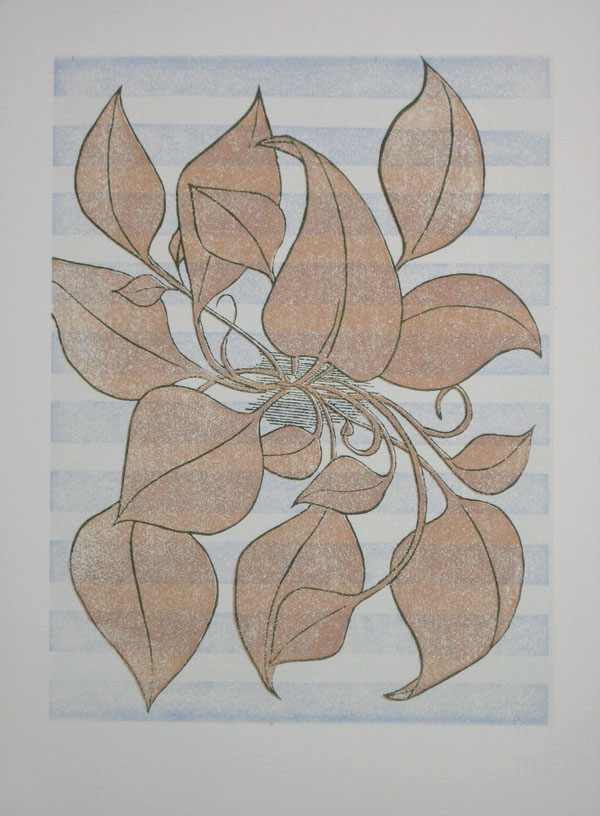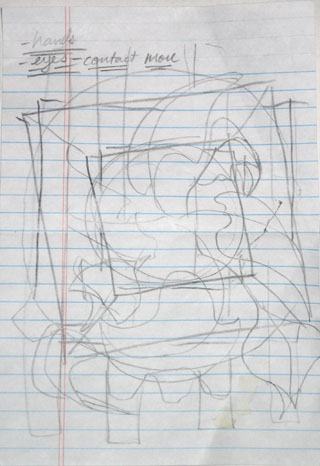
Sometimes it all begins with a small sketch
I like to give you an inside look at how I create woodblock prints. To that end, I present The Birth of Block 5.
Block 5 is another block used to make the 101 Woodblock Series. I number all of the blocks that I make, just because, well, I like a nice stack of numbered blocks. This block is the fifth block I’ve carved for the series of prints, with quite a few blocks left to go. Block 6 and 7 have been carved since I finished this block.
Like most of my good ideas, this one started out as a little sketch doodle on a notepad. I have a lot of note pads laying around at my desks, because I know that I have a tendency to forget stuff. Notes and lists are a vital tool for me.
I often get an idea when I am writing down notes, and doodle it down on a sheet of note paper. On the left is my original doodle for the image that I eventually carve in to Block 5.
You can see some of the notes in the corner of this sketch, I actually have no idea what these notes mean. I guess I need to take better notes…
When I do quick sketches like this, I am not too worried about detail. What I am drawing is the overall image that I have in my head. I try to get the overall feel of the image, the balance, and the major elements down on this paper.
Next I graduated to a larger sketch pad, the results are below:
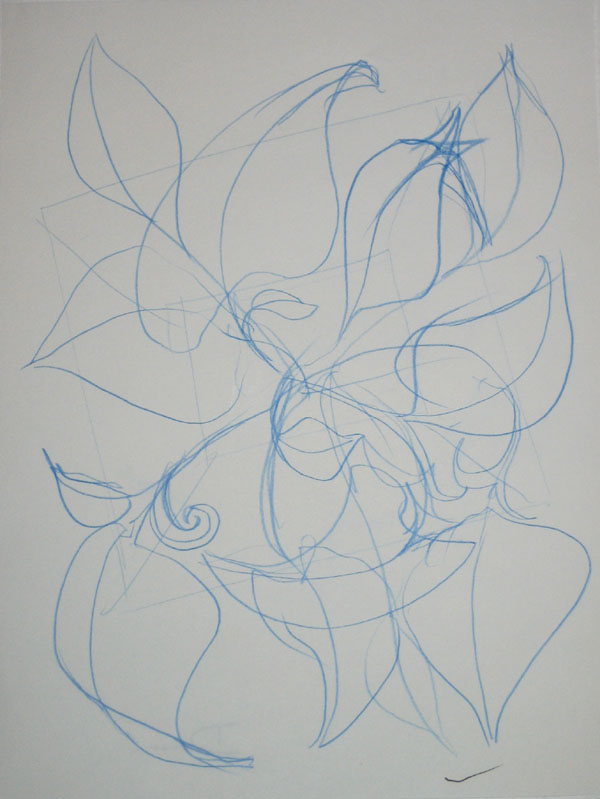
A larger concept sketch
I draw in blue pencil so that I can later go over the image with a regular pencil or a pen to darken up the image. I picked up this habit from comic book illustration. The pencils for each page are often done in blue pencil. Blue pencil does not reproduce in a photocopy machine, so when the page is inked and then copied to prepare it for color, the original pencils don’t show up.
I picked up this habit of working because I like how I am able to draw a light sketchy line, which I can then ignore or reinforce with a darker line as I refine the image.
Next I got out Block 5 and drew the image on the block in blue pencil again. When I had an image that I was happy with drawn in pencil, I went over the image in ink. Here is the partially inked block, you can see both the blue pencil and the ink drawing:
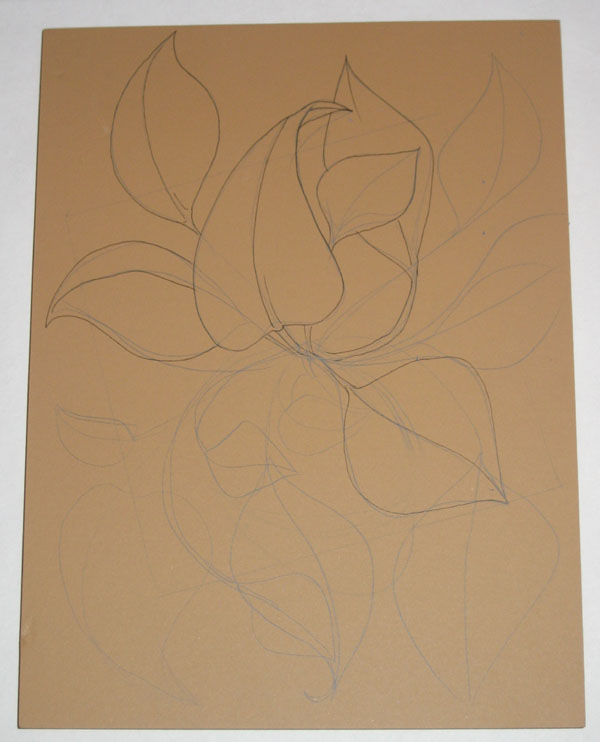
The design sketched in pencil, and partly finalized in ink
As I inked the image onto the block, I realized that I like the look of the ink drawing, and decided to carve the block so that it would have the look of a line drawing when it was printed. This was a change from my previous plan, which was for this block to print the flat shapes of the leaves.
I realized that I had done that before with some of my previous prints, so I decided to do something different with this block.
Another comment on this block’s image: one of the things that I was unsatisfied with on my previous prints was the how sparse the image felt. The previous images felt rather empty to me, and I wanted to create an image that was more abundant with growth, so to speak.
Finally, I sat down and started carving this block. Here is the partially carved block:
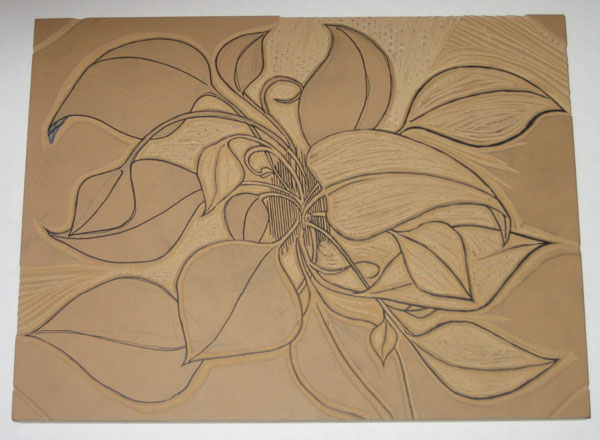
The block is partially carved
It turns out that carving a block so that it will replicate an ink drawing takes a long time. I spent around 10 hours carving this block. I had to be precise with my X-acto knife to follow the lines, to make sure the final carved line wasn’t too thick or too thin, and to make sure that the block was carved right.
One of the challenges of carving a linoleum block is that the material is not rigid. It is pretty flexible and soft. This makes it a little easier to carve than wood, but presents a problem of stability. I had to carve into the block at an angle, so that the linoleum base is bigger closer to the particle board that the linoleum is mounted on.
Each uncarved area of the block is like a little mountain sticking up off of the board surface. This is required to give each portion of linoleum stability, so it doesn’t get smashed and misshaped when I put pressure on it to transfer the ink from the block to the paper.
The result is that carving a block like this requires a lot of time and precision.
Finally, the block is finished:
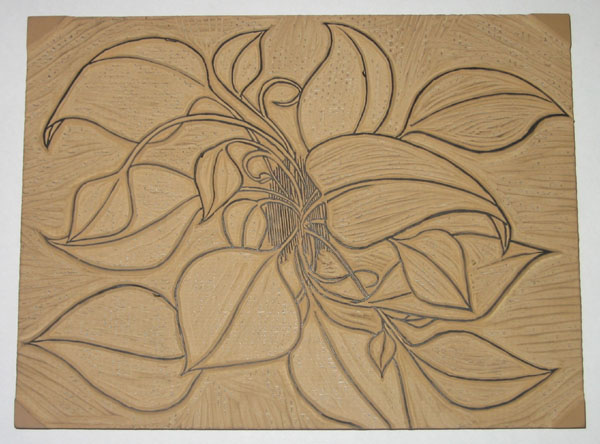
The block is completely carved
10 hours and ten sore fingers later, the block is finished. At least I didn’t cut myself this time, I seem to be getting better at not doing that.
Next I’ll show how I transfer this image to other blocks, and what I carve to compliment this block.
